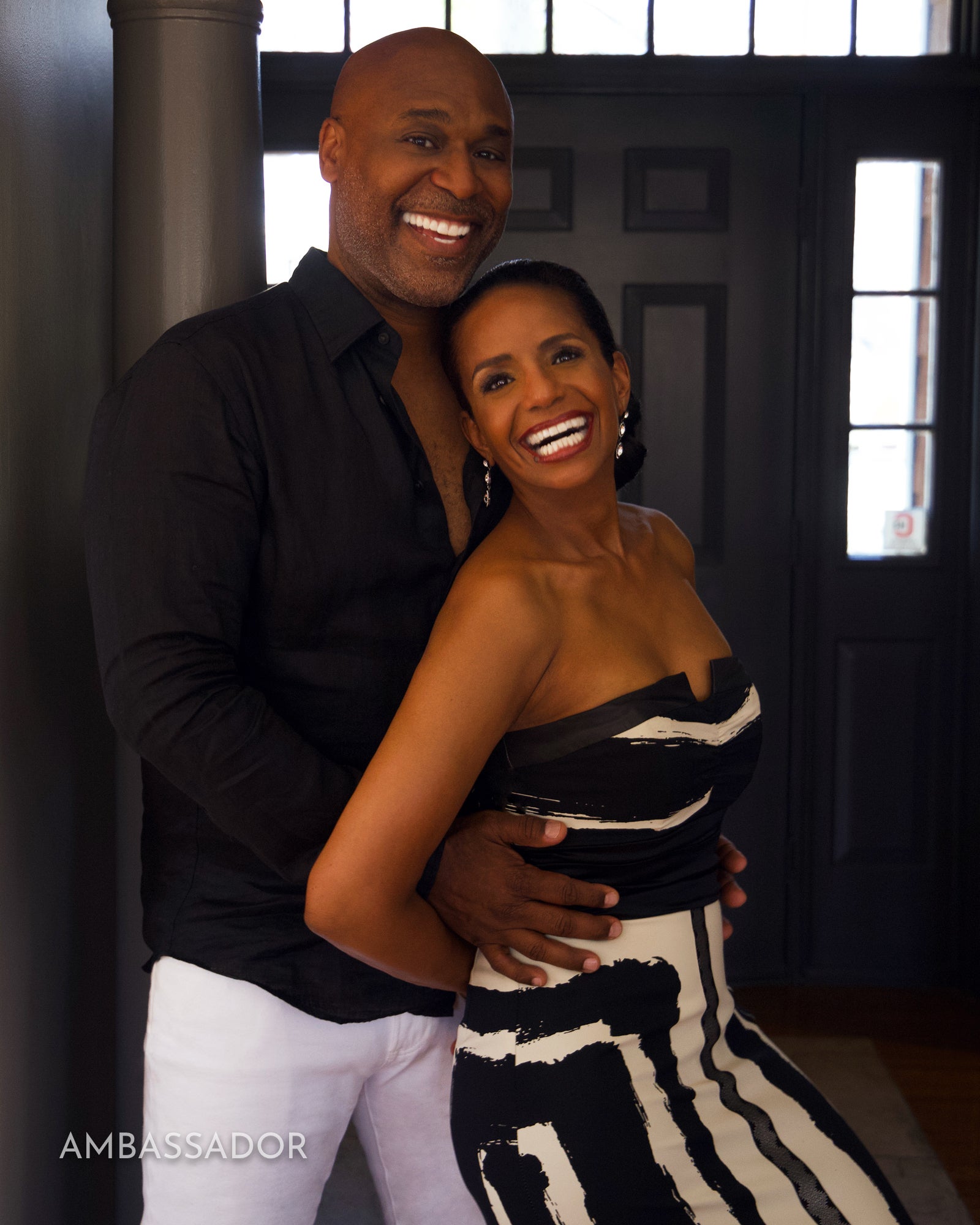Raised by a fashion designer mother, Everick Brown grew up in a household decked out with midcentury furnishings and carefully selected art—it would only make sense to lean into his artistic inclinations and dive into a creative career, right?
“The way my mother thought about it was, I would have to go on to become a doctor, lawyer, Indian chief—anything but a creative person,” Brown tells Kaitlin Petersen on the latest episode of Business of Home’s new Trade Tales podcast. “As a result, I was raised left brain/right brain. Most of my life I was focused on sports and academics, with this sort of side inclination for design and color.”
After graduating college, he considered law school and investment banking, but in the end, his creative side won out. He chose the retail route instead, inspired by the jewelry store his mother ran during his childhood, and rose quickly through the ranks of merchants like Lord & Taylor, Macy’s, Coach and J.Crew. Product development was an easy fit for Brown, and it took him on a whirlwind of trips to fashion shows and exotic locales—until the rise abruptly ended. In the late 1990s, he was caught up in a series of executive layoffs and felt the bottom pulled out from under him.
“[I thought], ‘What am I going to do with my life now?’ I had two children, I had a house in Chappaqua, [in Westchester, New York], and I had to make some big decisions,” says Brown. “I ended up deciding to create my own business. At the time, most would have assumed I would do men’s fashion, but what I had been quietly developing was this desire for home furnishings.”
In late 2001, Brown opened the EB Home store in Mount Kisco with a focus on home accessories, especially objects and accents. As he brought in furnishings to frame his products, the concept snowballed into a full-blown lifestyle brand, catching the attention of iconic industry figures such as Ralph Pucci and Martha Stewart, and leading to the opening of a second location.
When the market crashed, it sent Brown back to the drawing board again—but much like before, he turned the setback into an opportunity to whittle down to what he really wanted to do. In 2008, the designer began cultivating what would become Everick Brown Design, though he didn’t do it alone. Thanks to a well-timed high school reunion, Lisa Walker Brown reentered his life around the same time. The two had grown up together until college took them to different coasts—after nearly two decades apart, they soon dove into a relationship both romantic and business-focused. The two tied the knot, and Lisa brought the operational support and marketing expertise the couple would need to launch the firm.
In this week’s episode, Everick Brown and Lisa Walker Brown share the story of navigating the industry as a power couple slash design duo, and how understanding their own dynamic led them to better understand their client base—and their unique place among the competition.
Listen to the episode and check out some of the takeaways below. If you like what you hear, subscribe on Apple Podcasts or Spotify. This episode was sponsored by Mitchell Gold + Bob Williams and Universal Furniture.
It takes two to know two
When the industry hit a standstill in the early days of the pandemic, Everick consulted a business coach with a simple goal: By the time the world reemerged, he wanted Everick Brown Design to be an essential business. The process became one of deciphering what set their firm apart from the rest of the industry, prompting him to study his past clients and what made them successful. In the end, the answer was there all along—Everick and Lisa worked best as a couple, and they worked best for other couples. “When we’re dealing with a husband-and-wife team, or a wife-and-wife team, or a husband-and-husband team—it’s that partnership; we play off each other and are able to meet each individual person’s needs,” says Lisa.
Doing the homework
When presenting to prospective clients, Everick often spends hours (sometimes days) analyzing a project—drafting floor plans, exploring kitchen and bathroom renovations, estimating the number of pieces of furniture a space may need, and compiling a potential design fee based on the scope of the project. Many designers wouldn’t recommend this approach, but for the duo, it serves as a preview of the transparency and thoroughness that characterizes their business. “People have a sense of us, they’ve heard our voice, they’ve spoken with a friend who had our services, and they’re interested in having that kind of communication,” says Lisa. “It does instill a confidence that, when we present, we’re fully aware of what we’re getting into, and the client’s fully aware of what they’re getting into—and they’re able to make fully informed decisions.”
You’re speaking my language
The quest for more information about past clientele turned up more details than Everick expected. In regards to the firm’s average client, he compiled a pretty clear profile of who they’d be designing for: a couple that lived in the suburbs, played tennis and practiced yoga, sent their 2.5 kids to private school and drove Teslas. More importantly, he could now create specific messaging to draw in those ideal clients. “One of the things we market is offering the best return on investment, so you’ll often see ‘ROI’ on our messaging,” says the designer. “A lot of people will say, ‘What’s ROI? You can’t use that—people don’t understand what that is.’ Well, my specific client does. That’s the language they speak. They speak ROI, mitigating risk, and we enhance the ability for them to design together, budget together, to come up with a harmonious vision together.”
Homepage image: Everick Brown and Lisa Walker Brown | Courtesy of Everick Brown Design





























